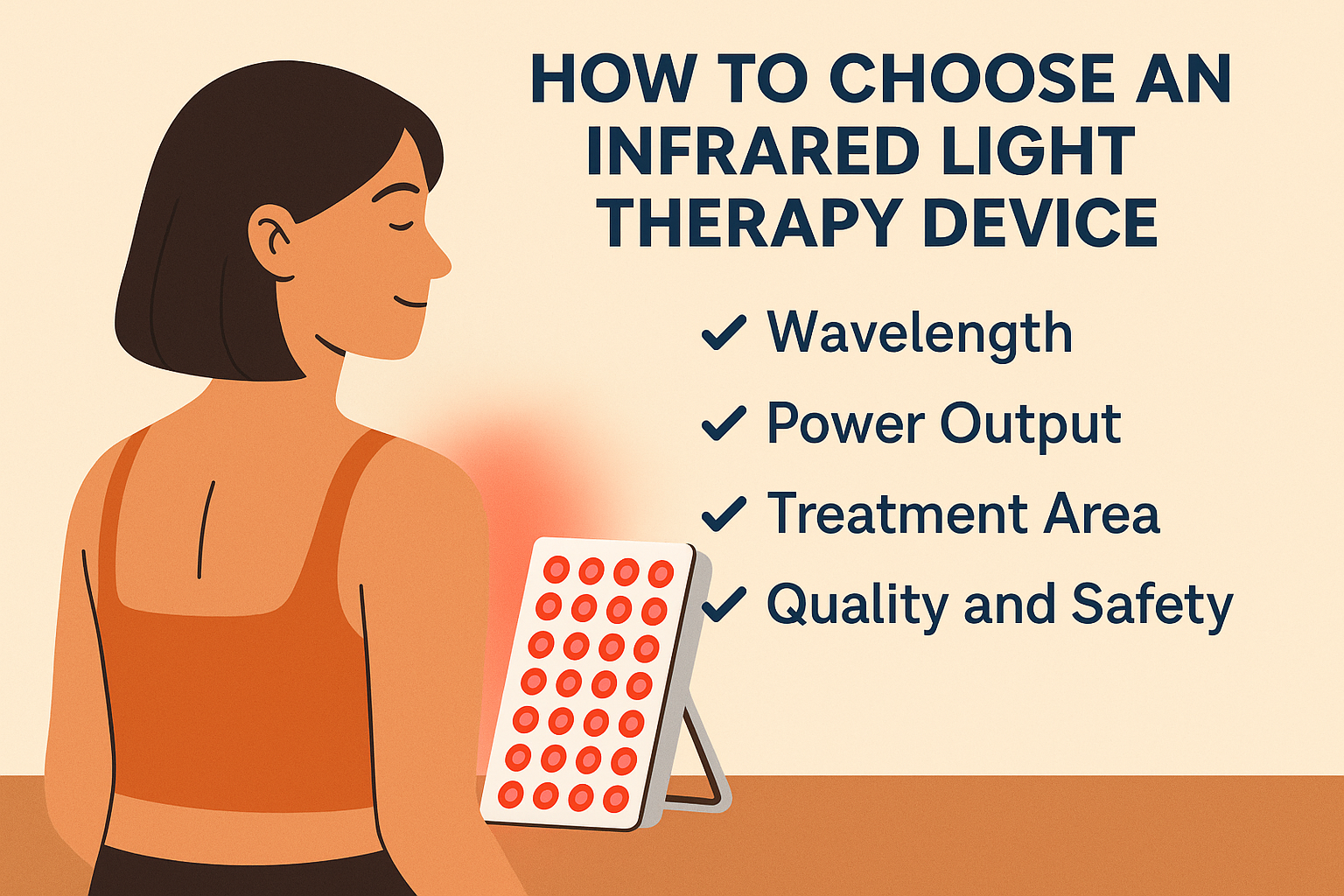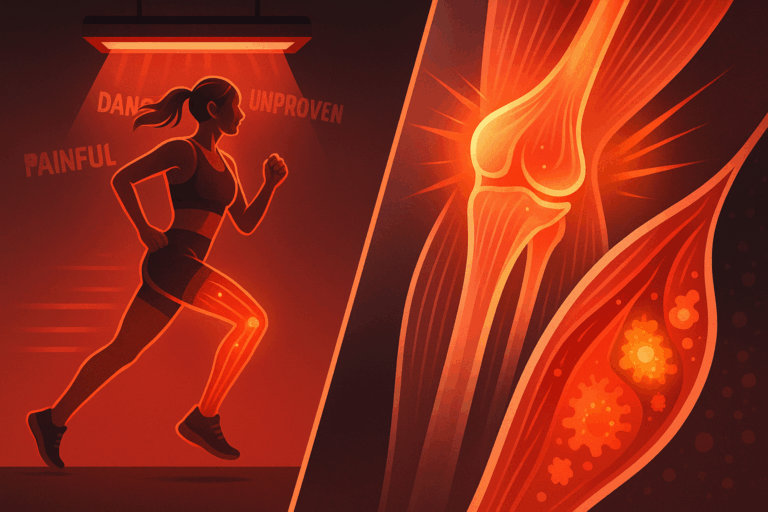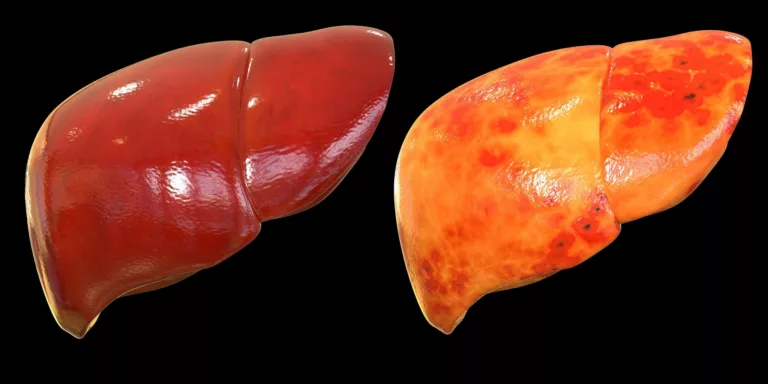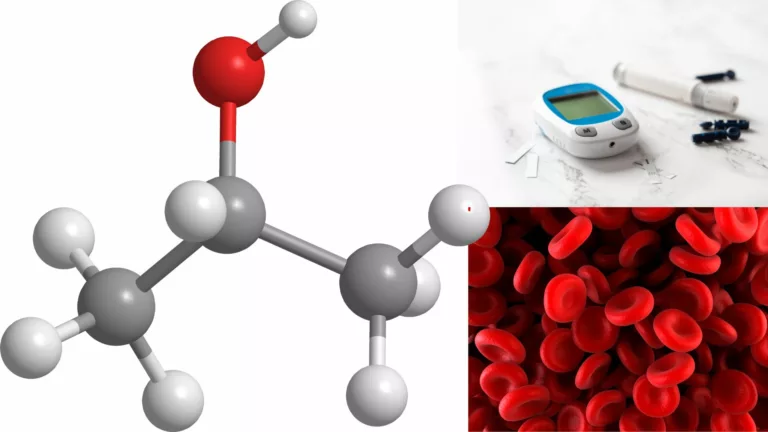1. Why Choosing the Right Device Matters
Infrared light therapy has become a powerful tool for managing pain, enhancing recovery, and improving skin and overall wellness. But with a wide array of devices on the market—ranging from $50 wands to $5,000 full-body panels—how do you know which one is right for you?
Choosing the right device isn’t just about price or popularity. It’s about matching your goals, body needs, and lifestyle with the right wavelength, power, and design. A device that works wonders for one person may be underpowered or overkill for another.
This guide walks you through the core considerations—from scientific specs to real-world usability—so you can choose the right Infrared Light Therapy Device with an informed, confident purchase that supports your health journey.
Medical Disclaimer
The information provided in this article, “Infrared Light Therapy 101: What It Is and How It Works,” is intended for educational and informational purposes only. It is not a substitute for professional medical advice, diagnosis, or treatment. Always consult with a qualified healthcare provider or physician before starting any new therapy, especially if you have a medical condition, are pregnant, or are taking medications that may cause sensitivity to light.
Infrared light therapy is generally considered safe, but individual results may vary. The content presented here is based on current research, user experiences, and publicly available sources, and does not constitute medical or therapeutic recommendations.
Use of any products, devices, or techniques mentioned in this article is at the reader’s own discretion and risk
2. Understand the Types of Infrared Light
Not all infrared light is the same. The infrared spectrum is divided into three categories, and each penetrates the body differently and serves distinct therapeutic purposes.
Near-Infrared (NIR)
- Wavelength: 700–1,100 nanometers (nm)
- Depth: Deep penetration (up to several centimeters into muscles and joints)
- Best For: Pain relief, inflammation, joint mobility, muscle recovery, brain stimulation
NIR is often combined with visible red light (620–660 nm) for surface and deep-tissue benefits.
Mid-Infrared (MIR)
- Wavelength: 1,400–3,000 nm
- Depth: Moderate penetration
- Best For: Soft tissue and connective tissue treatment, circulatory benefits
MIR is less common in consumer therapy devices and more often found in infrared saunas.
Far-Infrared (FIR)
Wavelength: 3,000–100,000+ nm- Depth: Primarily absorbed by the skin’s surface
- Best For: Detoxification, relaxation, metabolic stimulation (used in infrared saunas)
FIR is effective for increasing sweat, improving circulation, and reducing stress but doesn’t stimulate deep cellular repair like NIR.
So, Which Type Should You Choose?
- For muscle recovery, pain relief, and inflammation: Near-Infrared (850–950 nm)
- For skin rejuvenation and collagen production: Red light (620–660 nm), often paired with NIR
- For full-body detox or stress relief: Far-Infrared (FIR), typically through sauna use
- For brain and cognitive health: Targeted Near-Infrared (around 810–850 nm, used transcranially)
Many quality devices combine red + NIR for a broader therapeutic effect.
3. Define Your Goals and Use Case to Choose the Right Infrared Light Therapy
Before diving into specs and brands, get clear on what you want the device to do for you. Your specific goals should shape the type of device you choose:
Pain Relief & Inflammation
If you’re dealing with arthritis, back pain, or sports injuries, look for high-irradiance NIR panels or targeted wraps. These penetrate deeply into joints and muscles to reduce inflammation and accelerate healing.
Muscle Recovery & Athletic Performance
Athletes and active individuals often benefit from mid-size to large NIR panels or infrared saunas to support circulation and reduce delayed onset muscle soreness (DOMS) after workouts.
Skin Rejuvenation & Anti-Aging
If your main focus is skincare, opt for red and near-infrared combo devices. Smaller panels or facial wands targeting 620–660 nm (red) and 850 nm (NIR) are ideal for boosting collagen and reducing fine lines.
Mood, Sleep & Brain Health
Transcranial photobiomodulation (tPBM) uses NIR devices aimed at the forehead or scalp to support cognitive health and emotional balance. Use wearable headbands or low-level handheld NIR devices specifically designed for this purpose.
Full-Body Wellness
For general wellness, immune support, or relaxation, full-body panels or infrared saunas offer systemic benefits. Consider space, portability, and your routine when choosing between them.
Clinical or Home Use?
Clinical: High-powered, medical-grade equipment with precise targeting and often higher irradiance. Used under supervision.
Home: Consumer-friendly devices designed for convenience, safety, and ease of use. Great for daily maintenance or long-term therapy.
4. Key Features to Evaluate
Once you know your goals and the type of infrared therapy you need, it’s time to compare devices based on key specifications. Here’s what to look for:
a. Wavelength (nm)
Wavelength determines how deeply the light penetrates the body and what tissues it affects.
- 660 nm (red light): Great for skin surface, collagen production, and inflammation near the skin
- 810–850 nm (near-infrared): Ideal for muscle, joint, nerve, and brain-related treatments
- 940–950 nm: Penetrates deeper, especially effective for circulatory and connective tissue therapy
Tip: Devices that combine red (660 nm) and NIR (850 nm) wavelengths offer both surface and deep-tissue benefits and are often the most versatile.
b. Irradiance (Power Density)
Irradiance is the amount of light energy delivered to your skin, measured in mW/cm².
- 20–40 mW/cm²: Suitable for skin and cosmetic applications
- 60–100 mW/cm²: Ideal for deeper tissue therapy like muscles and joints
- 100+ mW/cm²: High-performance or clinical-grade devices
Note: More isn’t always better. Too much intensity too close to the skin can lead to overheating or diminishing returns.
c. Treatment Area
The size of the light-emitting surface determines how much of your body is treated at once.
- Spot Devices: Target small areas (e.g., facial wands, knee wraps)
- Mid-Size Panels: Cover larger areas like the back or legs
- Full-Body Panels or Saunas: Treat the entire body for systemic effects
Consider how much surface area you want to treat and how much time you’re willing to invest in sessions.
d. Treatment Time & Frequency
The right balance between power and size allows for shorter, more efficient treatments.
- High-irradiance + large panels = 10–15 minute sessions
- Low-irradiance + small devices = 20–30+ minutes per area
Some devices offer programmable timers, automatic shut-offs, or pulsing options for enhanced effect.
e. Form Factor and Use Type
Choose a design that suits your lifestyle and routine:
- Handheld Devices: Great for travel and spot treatment
- Mounted Panels: Ideal for regular, fixed-position use at home
- Wraps and Pads: Useful for joint pain and back issues
- Wearables: Used for brain or targeted use, often hands-free
- Saunas: Best for full-body relaxation and detoxification
Think about where and how often you’ll use the device before choosing a size or shape.
5. Safety Features and Certifications
Infrared light therapy is generally safe, but only when used properly—and that starts with choosing a device that meets appropriate safety standards.
a. FDA Clearance (U.S.)
For devices marketed with medical claims (e.g., pain relief, wound healing), FDA 510(k) clearance ensures they’ve met safety and efficacy standards. It’s not mandatory for consumer products, but it’s a strong trust signal.
💡 Look for FDA-cleared devices if you have a medical condition or want clinical-level results.
b. CE Mark (Europe)
CE certification indicates compliance with European health, safety, and environmental protection standards. This is especially important for users in the EU.
c. Eye Safety
Infrared light—particularly in the 850–950 nm range—is invisible but powerful and can affect the retina. Devices should include:
- Protective goggles (especially for facial or transcranial use)
- Automatic shut-off if eyes are detected too close
- Clear distance guidelines in the manual
d. EMF and Flicker Levels
Some low-quality devices emit high electromagnetic fields (EMFs) or invisible light flicker, which may be problematic for sensitive users. Look for:
- Low-EMF or zero-EMF certification
- No-flicker LEDs for brain and sleep-related applications
e. Overheating and Safety Timers
Good devices include built-in cooling fans, temperature regulation, and timers to prevent overuse or heat damage.
f. Materials and Build Quality
Look for:
- Durable metal or hard plastic housing
- High-quality LEDs (longer life, consistent output)
- Clear labeling of wavelengths and power output
Avoid unbranded devices with vague specs or poor reviews—even if the price is tempting.
6. Build Quality and LED Type
The performance and longevity of an infrared light therapy device heavily depend on the quality of its components—especially the LEDs (light-emitting diodes). Understanding these elements can help you avoid unreliable or underperforming products.
a. LED vs. Laser
Most consumer infrared devices use LEDs, which are safe, effective, and cost-efficient.
- LEDs: Broad light dispersion, lower heat output, long lifespan, safer for home use
- Lasers: Highly concentrated light used in clinical applications; more powerful, but also more expensive and regulated
For most users, LEDs are the optimal choice for affordability, safety, and ease of use.
b. Diode Quality
Higher-quality LEDs offer:
- Consistent wavelength output
- Longer lifespan (often 50,000–100,000 hours)
- Uniform light distribution without dimming
Signs of poor-quality LEDs:
- Inconsistent brightness
- Color shifts
- Quick burnout or reduced performance over time
c. Build Materials
Look for:
- Aluminum or steel housings for better durability and heat dispersion
- Medical-grade plastics (in wraps or pads) that withstand frequent use
- Secure wiring and seals for electrical safety
Avoid flimsy builds, plastic-only panels, or exposed internal components.
d. Passive vs. Active Cooling
Devices with higher irradiance levels generate more heat. Active cooling systems (built-in fans or heat sinks) are ideal for:
- Maintaining device longevity
- Ensuring safe skin contact
- Preventing overheating during longer sessions
Passive cooling may be sufficient for low-power or spot devices but is less effective for panels or multi-LED systems.
7. Brand Reputation and Reviews
Choosing a device from a trusted, well-reviewed brand dramatically increases the chance of a satisfying and effective experience.
a. Why Brand Matters
Reputable brands typically:
- Provide accurate technical specs
- Undergo third-party testing
- Offer responsive customer service
- Maintain transparency about materials and safety
In contrast, unknown or knockoff brands may misrepresent wavelength, power output, or safety features.
b. What to Look For in Reviews
Read both positive and critical reviews to assess:
- Performance consistency (Are people getting results over time?)
- Durability (Are devices failing within months?)
- Customer service (How are refunds, replacements, or questions handled?)
- Ease of use (Is the device intuitive and well-designed?)
💡 Tip: Look for verified buyers, photo evidence, or medical professionals endorsing the product.
c. Red Flags to Watch Out For
- No specific wavelengths listed
- Overpromising results (e.g., “cures all diseases”)
- No reviews or only generic 5-star comments
- Unclear warranty or contact information
8. Budget Considerations
Infrared therapy devices vary widely in price—from less than $100 to several thousand dollars. Knowing what to expect at each price tier helps you spend wisely without overpaying or under-buying.
a. Entry-Level ($50–$300)
- Small handhelds, facial wands, or basic pads
- May have lower irradiance or shorter lifespans
- Good for beginners or occasional use
- Often lack clinical power or FDA clearance
Best For: ✅ Skin care, small areas, casual wellness routines
b. Mid-Range ($300–$1,000)
- Mid-size panels or wraps with solid power output
- Usually include NIR + red wavelengths
- Better durability and safety features
- Some FDA-cleared options
Best For: ✅ Pain relief, muscle recovery, home therapy with regular use
c. High-End / Professional-Grade ($1,000–$5,000+)
- Full-body panels, saunas, or clinical devices
- Strong irradiance, larger treatment area, advanced settings
- Often used in chiropractic, rehab, or biohacking clinics
- Longer warranties, higher-quality build, and proven results
Best For: ✅ Athletes, chronic pain sufferers, or health professionals needing high efficiency and coverage
d. Is Price Always a Good Indicator?
Not necessarily. Some expensive devices offer only modest improvements over mid-range models. Focus on:
- Verified specs (wavelength, irradiance)
- Real-world results
- Warranty and support
💡 Pro Tip: Mid-range devices from reputable brands often provide the best balance of performance and value for most users.
9. Portability and Space Requirements
Before choosing an infrared therapy device, consider where and how you’ll use it. The best device isn’t just the most powerful—it’s the one that fits your lifestyle and available space.
a. Home Setup vs. Travel-Friendly Devices
- Home Use: Wall-mounted or free-standing panels are ideal for consistent, scheduled therapy sessions. Infrared saunas require dedicated space and ventilation.
- Travel or Multi-Room Use: Handheld devices and wraps are better suited for portability and flexibility. Some foldable panels and mats are designed specifically for easy storage or travel.
b. Mounting and Positioning
- Wall Mounts: Great for permanent setups in wellness rooms or bathrooms.
- Door Hooks or Tripods: Allow for adjustable height and angle, making them versatile for targeting different body areas.
- Flat Mats: Used for lying or sitting applications, often in FIR saunas or combined PEMF (Pulsed Electromagnetic Field) mats.
💡 Tip: Measure your space in advance and consider your daily routine. A bulky device that’s hard to access or store will get used less often—consistency is key.
c. Whole-Body Coverage vs. Targeted Use
- Full-body panels/saunas: Require standing or reclining space, ideal for systemic benefits.
- Targeted wraps or pads: Better for small living spaces or those treating localized pain (knees, back, shoulders, etc.)
10. Warranty, Return Policy, and Support
A quality device is a long-term investment in your health, and customer support matters, especially if something goes wrong.
a. Warranty Length
A good infrared therapy device should come with a 1- to 5-year warranty covering:
- LED performance
- Electrical issues
- Structural integrity
Higher-end brands often offer extended warranties for full-body systems or saunas.
b. Return Policy
Look for a 30- to 60-day risk-free trial—especially important if you’re unsure how your body will respond or if it’s your first time using light therapy.
💡 Watch out for restocking fees or return shipping charges. Check the fine print.
c. Customer Support
Reputable companies should offer:
- Responsive customer service (email, chat, or phone)
- Clear setup guides or videos
- Helpful user communities or FAQs
A good brand will stand behind its product and help troubleshoot any issues.
11. Popular and Trusted Brands to Explore
Here are a few of the most respected infrared therapy brands based on product quality, transparency, and user satisfaction:
a. Joovv
- Known for: Modular full-body panels with medical-grade power
- Strengths: FDA-cleared, sleek design, smartphone integration
- Best For: Serious home users, biohackers, and wellness clinics
b. PlatinumLED (BioMax Series)
- Known for: High irradiance and multi-wavelength technology
- Strengths: Custom control, third-party testing, great value
- Best For: Deep-tissue therapy and advanced home use
c. Mito Red Light
- Known for: Affordability and strong performance
- Strengths: Wide selection of red + NIR panels
- Best For: Budget-conscious users who want real therapeutic power
d. Sunlighten
- Known for: Premium infrared saunas (FIR, NIR, full-spectrum)
- Strengths: Spa-quality design, relaxing experience, full-body detox
- Best For: Users prioritizing whole-body wellness and stress relief
e. Red Light Rising (UK/EU Market)
- Known for: High-quality panels available internationally
- Strengths: Transparent specs, EMF-conscious designs
- Best For: European customers or travelers
12. Red Flags to Watch Out For
To avoid wasting money or exposing yourself to unsafe devices, be aware of these warning signs:
a. No Clear Wavelength Specs
If a company doesn’t list the exact nanometers (e.g., 660 nm or 850 nm), walk away. These numbers are essential to understanding what you’re getting.
b. Unrealistic Health Claims
Avoid devices that claim to:
- Cure cancer
- Regrow organs
- Replace medication completely
These are not only unethical but illegal without medical backing.
c. No Brand Reputation or Reviews
If the company is hard to research, lacks a web presence, or has mostly vague 5-star reviews—it’s a risk. Look for:
- Verified buyer reviews
- YouTube demos
- Mentions by professionals or on science-based platforms
d. Dirt-Cheap Pricing
While bargains exist, extremely low prices (e.g., full-size panels under $100) often signal:
- Weak light output
- Poor diode quality
- Safety hazards
- No real warranty or support
💡 Remember: You don’t need the most expensive device—but quality does have a minimum price point.
13. Quick Checklist: Choosing Your Infrared Light Therapy Device
Before you click “buy,” use this practical checklist to ensure you’re selecting a device that truly matches your goals and needs:
✅ Define Your Therapy Goals
- Pain relief and inflammation
- Skin health and anti-aging
- Muscle recovery and athletic performance
- Mood, sleep, or cognitive support
- Whole-body detox and relaxation
✅ Match the Right Wavelengths
660 nm (Red Light) – Surface-level, skin regeneration- 850–950 nm (Near-Infrared) – Deeper tissue, joints, muscles, brain
- FIR (Far-Infrared) – Full-body heating and detox (used in saunas)
✅ Evaluate Irradiance
- 20–40 mW/cm² for skin benefits
- 60–100+ mW/cm² for deeper healing
- Confirm distance tested (6″, 12″, etc.)
✅ Choose the Right Device Type
- Spot treatment (handhelds, wraps)
- Mid-size panel for general therapy
- Full-body panel or sauna for total coverage
- Wearables or headbands for brain applications
✅ Check for Key Safety Features
- FDA clearance (if medical claims are made)
- CE mark or third-party certification
- Eye protection if required
- Low EMF / flicker rating
- Built-in timers and overheating safeguards
✅ Research the Brand
- Verified wavelengths and irradiance specs
- Responsive customer support
- Real user reviews (and verified purchases)
- Transparent warranty and return policies
✅ Balance Your Budget and Goals
- Entry-level: ~$100–$300 (spot treatment, skin care)
- Mid-range: ~$300–$1000 (home therapy, pain relief)
- High-end: $1000+ (full-body, pro-level results)
14. Conclusion
Infrared light therapy can be a life-changing tool—when the right device meets the right purpose. It’s not about buying the most expensive panel or the trendiest gadget. It’s about aligning the science of light with the reality of your health goals.
Whether you’re recovering from injury, addressing chronic pain, improving your skin, or simply investing in long-term vitality, choosing the right infrared therapy device empowers you to take charge of your well-being—right from your home.
You now have the knowledge to:
- Understand wavelengths and what they do
- Spot legitimate devices from marketing fluff
- Invest in quality and safety with confidence
The light is powerful. The healing is real. The decision is yours.







